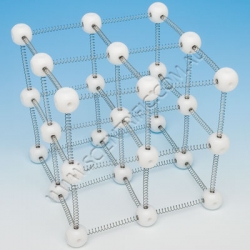230 results found for 'Model'. |1|2|3|4|5|6|7|8|9|10 | Next | View 100 per page
Low relevance matches: 109 other results may be of interest to you. Show low relevance matches
Atomic Models - All matter is made of atoms which are composed of protons, neutrons and electrons; natural radioactivity arises from the decay of nuclei in atoms ACSSU182 Year 9 Physical Sciences
Energy Transfer - Energy transfer through different mediums can be explained using wave and particle models ACSBL029 Year 11 Biodiversity and the interconnectedness of life
Ecosystem dynamics - Models of ecosystem interactions (for example, food webs, successional models) can be used to predict the impact of change and are based on interpretation of and extrapolation from sample data (for example, data derived from ecosystem surveying techniques ACSBL085 Year 12 Heredity and continuity of life
DNA genes and the continuity of life - Frequencies of genotypes and phenotypes of offspring can be predicted using probability models, including Punnett squares, and by taking into consideration patterns of inheritance, including the effects of dominant, autosomal and sex-linked alleles and mu ACSBL110 Year 12 Maintaining the internal environment
Homeostasis - Homeostasis involves a stimulus response model in which change in external or internal environmental conditions is detected and appropriate responses occur via negative feedback; in vertebrates, receptors and effectors are linked via a control centre by n ACSCH018 Year 11 Chemical fundamentals
Properties and structure of atoms - Atoms can be modelled as a nucleus surrounded by electrons in distinct energy levels, held together by electrostatic forces of attraction between the nucleus and electrons; atoms can be represented using electron shell diagrams (all electron shells or val ACSCH032 Year 11 Chemical fundamentals
Properties and structure of materials - The characteristic properties of metals (for example, malleability, thermal conductivity, electrical conductivity) are explained by modelling metallic bonding as a regular arrangement of positive ions (cations) made stable by electrostatic forces of attra ACSCH056 Year 11 Molecular interactions and reactions
Intermolecular forces and gases - The shapes of molecules can be explained and predicted using three dimensional representations of electrons as charge clouds and using valence shell electron pair repulsion (VSEPR) theory ACSCH099 Year 12 Equilibrium acids and redox reactions
Chemical equilibrium systems - The relationship between acids and bases in equilibrium systems can be explained using the Brønsted Lowry model and represented using chemical equations that illustrate the transfer of hydrogen ions ACSCH103 Year 12 Equilibrium acids and redox reactions
Oxidation and reduction - A range of reactions, including displacement reactions of metals, combustion, corrosion, and electrochemical processes, can be modelled as redox reactions involving oxidation of one substance and reduction of another substance ACSCH104 Year 12 Equilibrium acids and redox reactions
Oxidation and reduction - Oxidation can be modelled as the loss of electrons from a chemical species, and reduction can be modelled as the gain of electrons by a chemical species; these processes can be represented using half equations ACSPH063 Year 11 Linear Motion and Waves
Linear motion and force - Newton’s Three Laws of Motion describe the relationship between the force or forces acting on an object, modelled as a point mass, and the motion of the object due to the application of the force or forces ACSPH076 Year 11 Linear Motion and Waves
Waves - A wave model explains a wide range of lightrelated phenomena including reflection, refraction, total internal reflection, dispersion, diffraction and interference; a transverse wave model is required to explain polarisation ACSPH139 Year 12 Revolutions in modern physics
Quantum theory - The Bohr model of the hydrogen atom integrates light quanta and atomic energy states to explain the specific wavelengths in the hydrogen spectrum and in the spectra of other simple atoms; the Bohr model enables line spectra to be correlated with atomic en ACSCH031 Year 11 Chemical fundamentals
Properties and structure of materials - The properties of ionic compounds (for example, high melting point, brittleness, ability to conduct electricity when liquid or in solution) are explained by modelling ionic bonding as ions arranged in a crystalline lattice structure with forces of attract ACSPH071 Year 11 Linear Motion and Waves
Waves - The mechanical wave model can be used to explain phenomena related to reflection and refraction ACSPH074 Year 11 Linear Motion and Waves
Waves - Light exhibits many wave properties; however, it cannot be modelled as a mechanical wave because it can travel through a vacuum ACSPH075 Year 11 Linear Motion and Waves
Waves - A ray model of light may be used to describe reflection, refraction and image formation from lenses and mirrors ACSPH140 Year 12 Revolutions in modern physics
Quantum theory - On the atomic level, energy and matter exhibit the characteristics of both waves and particles
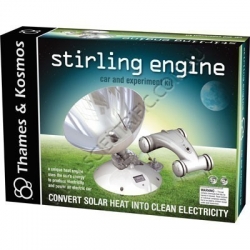
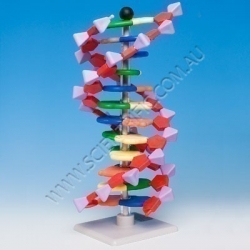

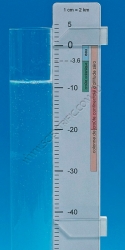
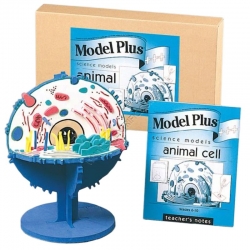


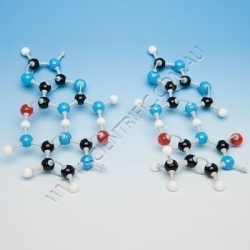
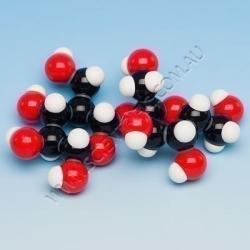
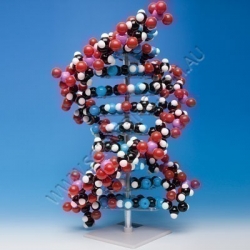
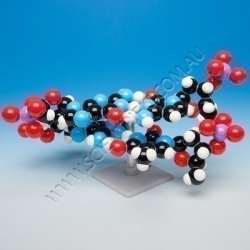
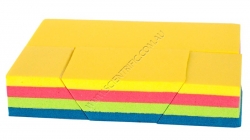


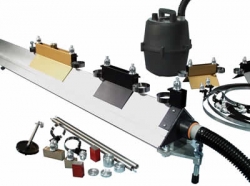

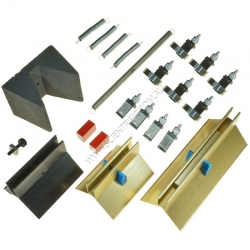
230 results found for 'Model'. |1|2|3|4|5|6|7|8|9|10 | Next | View 100 per page
Low relevance matches: 109 other results may be of interest to you. Show low relevance matches
Curriculum resources related to 'Model'
ACSSU177 Year 9 Chemical SciencesAtomic Models - All matter is made of atoms which are composed of protons, neutrons and electrons; natural radioactivity arises from the decay of nuclei in atoms ACSSU182 Year 9 Physical Sciences
Energy Transfer - Energy transfer through different mediums can be explained using wave and particle models ACSBL029 Year 11 Biodiversity and the interconnectedness of life
Ecosystem dynamics - Models of ecosystem interactions (for example, food webs, successional models) can be used to predict the impact of change and are based on interpretation of and extrapolation from sample data (for example, data derived from ecosystem surveying techniques ACSBL085 Year 12 Heredity and continuity of life
DNA genes and the continuity of life - Frequencies of genotypes and phenotypes of offspring can be predicted using probability models, including Punnett squares, and by taking into consideration patterns of inheritance, including the effects of dominant, autosomal and sex-linked alleles and mu ACSBL110 Year 12 Maintaining the internal environment
Homeostasis - Homeostasis involves a stimulus response model in which change in external or internal environmental conditions is detected and appropriate responses occur via negative feedback; in vertebrates, receptors and effectors are linked via a control centre by n ACSCH018 Year 11 Chemical fundamentals
Properties and structure of atoms - Atoms can be modelled as a nucleus surrounded by electrons in distinct energy levels, held together by electrostatic forces of attraction between the nucleus and electrons; atoms can be represented using electron shell diagrams (all electron shells or val ACSCH032 Year 11 Chemical fundamentals
Properties and structure of materials - The characteristic properties of metals (for example, malleability, thermal conductivity, electrical conductivity) are explained by modelling metallic bonding as a regular arrangement of positive ions (cations) made stable by electrostatic forces of attra ACSCH056 Year 11 Molecular interactions and reactions
Intermolecular forces and gases - The shapes of molecules can be explained and predicted using three dimensional representations of electrons as charge clouds and using valence shell electron pair repulsion (VSEPR) theory ACSCH099 Year 12 Equilibrium acids and redox reactions
Chemical equilibrium systems - The relationship between acids and bases in equilibrium systems can be explained using the Brønsted Lowry model and represented using chemical equations that illustrate the transfer of hydrogen ions ACSCH103 Year 12 Equilibrium acids and redox reactions
Oxidation and reduction - A range of reactions, including displacement reactions of metals, combustion, corrosion, and electrochemical processes, can be modelled as redox reactions involving oxidation of one substance and reduction of another substance ACSCH104 Year 12 Equilibrium acids and redox reactions
Oxidation and reduction - Oxidation can be modelled as the loss of electrons from a chemical species, and reduction can be modelled as the gain of electrons by a chemical species; these processes can be represented using half equations ACSPH063 Year 11 Linear Motion and Waves
Linear motion and force - Newton’s Three Laws of Motion describe the relationship between the force or forces acting on an object, modelled as a point mass, and the motion of the object due to the application of the force or forces ACSPH076 Year 11 Linear Motion and Waves
Waves - A wave model explains a wide range of lightrelated phenomena including reflection, refraction, total internal reflection, dispersion, diffraction and interference; a transverse wave model is required to explain polarisation ACSPH139 Year 12 Revolutions in modern physics
Quantum theory - The Bohr model of the hydrogen atom integrates light quanta and atomic energy states to explain the specific wavelengths in the hydrogen spectrum and in the spectra of other simple atoms; the Bohr model enables line spectra to be correlated with atomic en ACSCH031 Year 11 Chemical fundamentals
Properties and structure of materials - The properties of ionic compounds (for example, high melting point, brittleness, ability to conduct electricity when liquid or in solution) are explained by modelling ionic bonding as ions arranged in a crystalline lattice structure with forces of attract ACSPH071 Year 11 Linear Motion and Waves
Waves - The mechanical wave model can be used to explain phenomena related to reflection and refraction ACSPH074 Year 11 Linear Motion and Waves
Waves - Light exhibits many wave properties; however, it cannot be modelled as a mechanical wave because it can travel through a vacuum ACSPH075 Year 11 Linear Motion and Waves
Waves - A ray model of light may be used to describe reflection, refraction and image formation from lenses and mirrors ACSPH140 Year 12 Revolutions in modern physics
Quantum theory - On the atomic level, energy and matter exhibit the characteristics of both waves and particles
Products related to 'Model'

Stirling Engine Model
Power a Car with Solar Generated Electricity. Discover the Stirling engine, a simple, clean and efficient energy technology that is quickly becoming a viable source of electricity as the availability of fossil fuels declines. The Stirling engine in this kit uses renewable energy ...
Order code: 620325



Molymod DNA Model Kit 12 Layer
MOLYMOD DNA 12 LAYER MODEL KIT
This advanced model of one complete turn of the DNA double helix is designed for self-assembly of the 12 layers. The double helix structure becomes evident as the model is constructed.
Components include colour coded bases (G,C,A and T)...
Order code: AMDNA-060-12



Molymod DNA Model Kit 22 Layer
MOLYMOD DNA 22 LAYER MODEL KIT
This advanced model of two complete turns of the DNA double helix is designed for self-assembly of the 22 layers. The double helix structure becomes evident as the model is constructed.
The components include colour coded bases (G, C, A a...
Order code: AMDNA-060-22



Sciencéthic Isostasy Model
SCIENCÉTHIC ISOSTASY MODEL
This analogical model shows how tectonic plates are “floating” on the asthenosphere and enables students to study isostasy phenomenon. It includes a vertical tube that can be filled with a safe and easy to clean water gel that has a density clos...
Order code: 032 017

Animal Cell Model
Last one available
Five inquiry-based activities cover cell structure and function, osmosis, eukaryotes, bacteria and more.
Suitable for primary qnd high school.
Made from resilient, nontoxic EVA-foam construction to withstand years of hands on use.
Includes:
5 Inquiry based lab activities,...
Order code: 2050441
Sciencéthic Water Gel for Isostasy Model
SCIENCÉTHIC WATER GEL
Water gel for the Sciencethic Isostasy Model (Order Code 032 017).
The gel is to be mixed with water and makes enough water gel to fill two tubes.
Density ≈ 1 (98% of water)
Order code: 911 075

Molymod Mini DNA-RNA Base Model Kit
MOLYMOD MINI DNA-RNA BASE MODEL KIT
Illustrate codons and the structure of RNA, a single stranded molecule responsible for controlling the process of amino acid sequencing during protein synthesis, with this Molymod kit.
Transcription, in which the DNA unzips and bas...
Order code: AMRNA-12 p.s.

IEC Kinetic Theory Model Electric
IEC KINETIC THEORY MODEL ELECTRIC 12V DC
The IEC Kinetic Theory apparatus simulates the behaviour of a gas. A strong DC motor is connected to a vibrating rubber faced platform inside an acrylic tube with a scale. A quantity of small stainless steel balls loaded into the t...
Order code: MF1990-001



Molymod DNA Open Model of Adenine Cytosine Guanine Thymine - 2019 Edition
Molymod DNA bases kit.A genuine Molymod product NOT a cloned look-a-like.This kit contains instructions and parts to build one model of each of the four DNA bases - Adenine, Cytosine, Guanine and Thymine.
Order code: MKO-ACGT-53 (2019ed)

Molymod Model Biochemistry Sucrose
MOLYMOD SUCROSE
A set of genuine Molymod® black carbon, red oxygen and white dome hydrogen atoms,
plus links and a tool to build a model of a sucrose molecule C12H22O11
The approximate inter-nuclear scale is 1.45cm/Angstrom
I...
Order code: MKS-116

Molymod DNA Model 10 Base Pairs on Stand
MOLYMOD DNA 10 BASE PAIRS MODEL
DNA double helix structure is clearly demonstrated by your students assembling this 10 layer molecular model. It is composed of five two-layer models MKS-122-2 each representing the molec...
Order code: MKS-122-10



Molymod DNA Model 2 Base Pairs on Stand
MOLYMOD DNA 2 BASE PAIRS MODEL
A compact DNA model with parts to build two base pairs, Thymine-Adenine and Cytosine-Guanine with deoxyribose-phosphate side chains. When assembled the layers are supported on a small stand. The assembled model can be easily dismantled and ...
Order code: MKS-122-2



Geological Faults and Folds - Miniature Model
Last one available
MINIATURE MODEL - GEOLOGICAL FAULTS AND FOLDS. Made of semi-rigid foam this 4 piece model is used to demonstrate plate tectonics and changes in geological formations (faults/folds) due to earthquakes or other geological pressures. Using the three sections with angled s... Order code: SC17057
MINIATURE MODEL - GEOLOGICAL FAULTS AND FOLDS. Made of semi-rigid foam this 4 piece model is used to demonstrate plate tectonics and changes in geological formations (faults/folds) due to earthquakes or other geological pressures. Using the three sections with angled s... Order code: SC17057
| Purchase QTY: (Each) | 1+ |
|---|---|
| Scientrific's price | $3.40 |
| CLICK FOR QTY PRICING | |
| Prices exclude GST and freight | |

IEC Van de Graaff Silicon Belt for all small 200kV models
IEC VAN DE GRAAFF SMALL SILICONE BELT FOR 200KV MODELS
This moulded one-piece, charge transfer belt has no join and is made from silicon rubber to reduce problems due to damp and humidity. The belt is designed for use on all IEC 200kV Van de Graaff generators (VDGs).
...
Order code: PA4137-010S

IEC Van de Graaff Silicon Belt for all large 400kV models
IEC VAN DE GRAAFF LARGE 500mm SILICONE BELT
This moulded one-piece, charge transfer belt has no join and is made from silicon rubber to reduce problems due to damp and humidity. The belt is designed for use on all IEC 400kV Van de Graaffs (VDGs).
Notes:
• This...
Order code: PA4138-010S

IEC Air Track Assembly Kit for All Models
IEC AIR TRACK KIT ASSEMBLY KIT FOR ALL MODELS
The IEC Air Track Air Tube Assembly Kit is normally supplied with the air tube but it is also available here separately. It is the same for both 2m and 2.5m IEC Air Tracks.
The kit mainly contains the feet and level adjus...
Order code: MF0132-001

IEC Air Track Operation Kit for All Models
IEC AIR TRACK OPERATION KIT FOR ALL MODELS
The IEC Air Track Operation Kit is normally supplied with the 2.5m MF0105Z-001 and 2m MF0107Z-001 Complete Air Tracks but it is also available here separately. It is the same for both 2m and 2.5m IEC Air Tracks.
The Operation ...
Order code: MF0133-001

IEC Air Track Booster Kit for All Models
IEC AIR TRACK BOOSTER KIT FOR ALL MODELS
The IEC Air Track Booster Kit contains a set of parts for expanding the standard MF0133-001 Operation Kit. The booster kit is the same for both 2m and 2.5m tracks.
It includes extra gliders and parts and includes a heavy cast St...
Order code: MF0136-101A
230 results found for 'Model'. |1|2|3|4|5|6|7|8|9|10 | Next | View 100 per page




